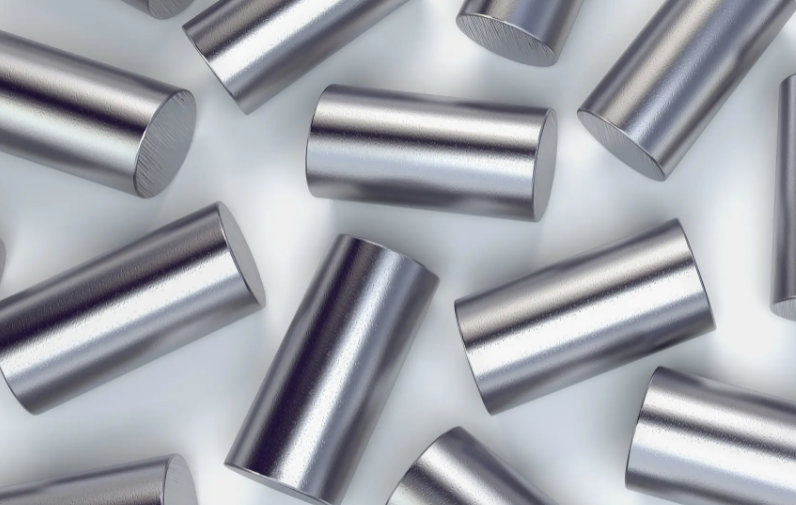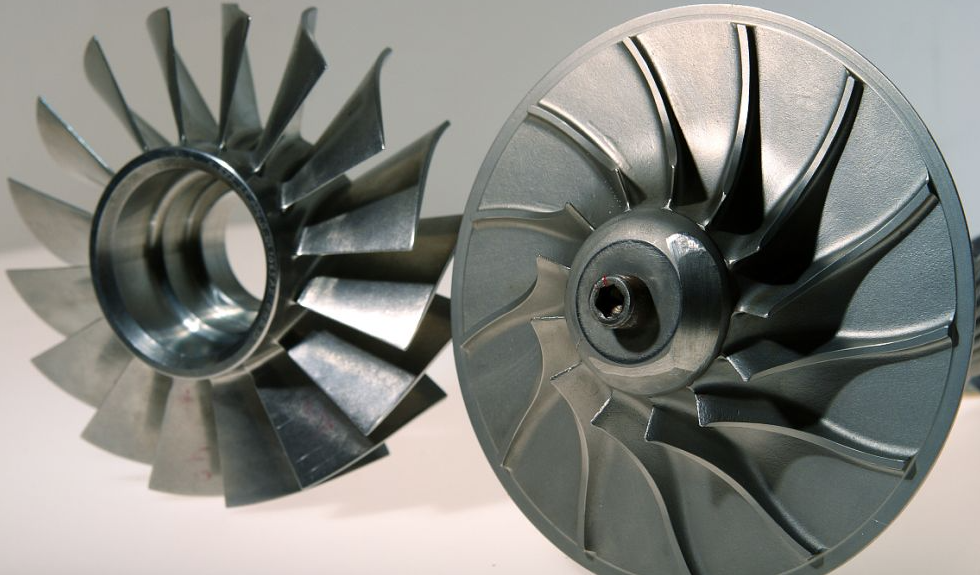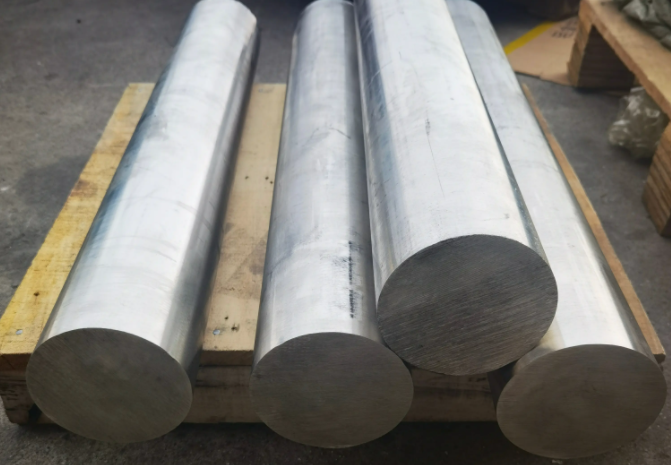Superalloys, also known as high-temperature alloys or heat-resistant alloys, are advanced metallic materials designed to withstand extreme temperatures, often exceeding a significant percentage of their melting point, while maintaining mechanical strength under prolonged stress. These alloys are critical in industries requiring materials that perform reliably in harsh environments, such as aerospace, energy, and chemical processing. This article provides a comprehensive overview of superalloys, covering their history, key features, and diverse applications.
History of Superalloys
The development of superalloys is closely tied to advancements in high-temperature engineering, particularly in the aerospace and energy sectors. Their history reflects the growing demand for materials capable of withstanding extreme conditions.
- Early 20th Century: The need for high-temperature materials emerged with the development of gas turbines and early jet engines. Stainless steels and basic nickel-chromium alloys were initially used but lacked sufficient strength at elevated temperatures.
- 1940s: During World War II, the demand for jet engines spurred the development of nickel-based superalloys. Alloys like Nimonic 80, introduced by Mond Nickel Company, marked a significant milestone due to their ability to maintain strength at high temperatures.
- 1950s–1960s: The introduction of vacuum melting and casting techniques improved alloy purity, reducing defects and enhancing performance. The discovery of the gamma prime (γ′) phase, a Ni₃(Al,Ti) compound, revolutionized nickel-based superalloys by providing exceptional creep resistance.
- 1970s–1980s: Single-crystal superalloys were developed, eliminating grain boundaries to further enhance high-temperature performance. Additions of rare elements like rhenium (Re) and tantalum (Ta) improved strength and oxidation resistance.
- 1990s–Present: Advances in manufacturing, such as directional solidification and additive manufacturing, have enabled the production of complex superalloy components. Ongoing research focuses on reducing costs and improving sustainability while maintaining performance.

Key Features of Superalloys
Superalloys are distinguished by their exceptional properties, making them suitable for extreme environments. Below are the primary features that define their performance, along with specific parameters where applicable.
- High-Temperature Strength: Superalloys maintain mechanical strength at temperatures often exceeding 0.7 times their melting point (e.g., nickel-based superalloys operate effectively above 1000°C). This is achieved through solid-solution strengthening and precipitation hardening, particularly via the γ′ phase in nickel-based alloys.
- Creep Resistance: Creep, the slow plastic deformation under constant stress at high temperatures, is minimized in superalloys. For example, single-crystal nickel-based superalloys can resist creep at stresses up to 200 MPa at 1000°C for thousands of hours.
- Oxidation and Corrosion Resistance: Elements like chromium (Cr, typically 10–20 wt%) and aluminum (Al, 5–7 wt%) form protective oxide layers (e.g., Cr₂O₃ or Al₂O₃), enabling superalloys to resist oxidation and hot corrosion in environments like combustion gases.
- Fatigue Resistance: Superalloys withstand cyclic loading at high temperatures, critical for components like turbine blades experiencing thermal and mechanical fatigue. Fatigue life can exceed 10⁷ cycles under specific conditions.
- Fracture Toughness: Superalloys maintain toughness even with existing cracks, with fracture toughness values (K₁c) typically ranging from 20 to 50 MPa·m¹/² at elevated temperatures.
The following table summarizes the key properties of superalloys by type:
| Superalloy Type | Base Element | Operating Temperature (°C) | Key Features |
|---|---|---|---|
| Nickel-Based | Ni | Up to 1100 | High strength, excellent creep resistance, γ′ phase strengthening |
| Cobalt-Based | Co | Up to 1200 | Superior wear resistance, high thermal stability |
| Iron-Based | Fe | 600–850 | Cost-effective, moderate strength |
Composition of Superalloys
Superalloys are complex alloys with a base metal (nickel, cobalt, or iron) combined with various alloying elements to enhance specific properties. The choice and concentration of these elements depend on the intended application.
| Element | Rolle | Typical Content (wt%) |
|---|---|---|
| Chrom (Cr) | Oxidation and corrosion resistance | 10–20 |
| Aluminum (Al) | Forms γ′ phase, oxidation resistance | 5–7 |
| Titanium (Ti) | Forms γ′ phase, strengthens alloy | 1–5 |
| Molybdenum (Mo), Tungsten (W) | Solid-solution strengthening | 2–10 |
| Tantalum (Ta), Niobium (Nb), Rhenium (Re) | Creep resistance, phase stability | 1–6 |
| Boron (B), Zirconium (Zr) | Grain boundary strengthening | 0.01–0.1 |
Applications of Superalloys
Superalloys are indispensable in industries requiring materials that perform under extreme conditions. Their applications span multiple sectors, driven by their ability to withstand high temperatures, stress, and corrosive environments.
- Luft- und Raumfahrt: Nickel-based superalloys are the backbone of jet engines and gas turbines, used in turbine blades, discs, combustors, and casings. For example, single-crystal turbine blades operate at temperatures up to 1100°C and stresses of 150–200 MPa. Nickel-based superalloys like HAYNES 282 are used in gas turbine engines for turbine blades, combustors, and exhaust components, operating at 649–982°C. HAYNES 282’s weldability supports complex assemblies and repairs, surpassing alloys like Inconel 718 in creep performance.
- Energy: Superalloys are used in land-based gas turbines and nuclear power plants, particularly in steam generator tubes and high-temperature components, operating at 600–1000°C.
- Marine: Cobalt-based superalloys are employed in shipboard gas turbines due to their resistance to saltwater corrosion and high temperatures.
- Automobilindustrie: Superalloys are used in turbocharger rotors, which operate at temperatures up to 800°C, improving engine efficiency.
- Oil and Gas: Superalloys are critical for components in deep-sea drilling and extraction, where they face high-pressure, high-temperature (HPHT) conditions and corrosive fluids.
- Chemical and Metallurgical Industries: Superalloys are used in high-temperature furnaces, heat exchangers, valves, and piping systems, often operating at 700–1000°C in aggressive chemical environments.
- Medizinisch: Certain cobalt-based superalloys, due to their biocompatibility and wear resistance, are used in medical implants like hip and knee replacements.

Schlussfolgerung
Superalloys are a cornerstone of modern high-performance engineering, enabling technologies that operate in extreme environments. From their origins in the early 20th century to their current role in cutting-edge applications, superalloys have evolved through advancements in metallurgy and manufacturing. Their unique combination of high-temperature strength, creep resistance, and corrosion resistance makes them essential in aerospace, energy, and other critical industries. As research continues, superalloys are expected to become even more efficient and sustainable, further advancing high-tech industries.
Superalloys FAQ
What are superalloys?
Superalloys are advanced metallic materials designed to withstand extreme temperatures, often exceeding 0.7 times their melting point, while maintaining mechanical strength, creep resistance, and corrosion resistance. They are typically based on nickel, cobalt, or iron.
What are the main types of superalloys?
The three main types are:
Nickel-based: Operate up to 1100°C, known for high strength and creep resistance.
Cobalt-based: Operate up to 1200°C, offering superior wear resistance and thermal stability.
Iron-based: Operate up to 600–850°C, cost-effective with moderate strength.
How were superalloys developed historically?
Early 20th Century: Stainless steels and basic nickel-chromium alloys used for early gas turbines.
1940s: Nickel-based alloys like Nimonic 80 developed for jet engines during WWII.
1950s–1960s: Vacuum melting and γ′ phase discovery improved performance.
1970s–1980s: Single-crystal superalloys and rare elements like rhenium enhanced properties.
1990s–Present: Advances in directional solidification and additive manufacturing improved production.
What are the key alloying elements in superalloys?
Common elements include: Chromium (Cr, 10–20 wt%): Enhances oxidation and corrosion resistance.
Aluminum (Al, 5–7 wt%): Forms γ′ phase and improves oxidation resistance.
Titanium (Ti, 1–5 wt%): Strengthens through γ′ phase.
Molybdenum (Mo), Tungsten (W, 2–10 wt%): Provide solid-solution strengthening.
Tantalum (Ta), Niobium (Nb), Rhenium (Re, 1–6 wt%): Improve creep resistance.
Boron (B), Zirconium (Zr, 0.01–0.1 wt%): Strengthen grain boundaries.
What is creep resistance, and why is it important?
Creep is the slow deformation of a material under constant stress at high temperatures. Superalloys, particularly nickel-based single-crystal alloys, resist creep at stresses up to 200 MPa at 1000°C for thousands of hours, making them ideal for components like turbine blades.
